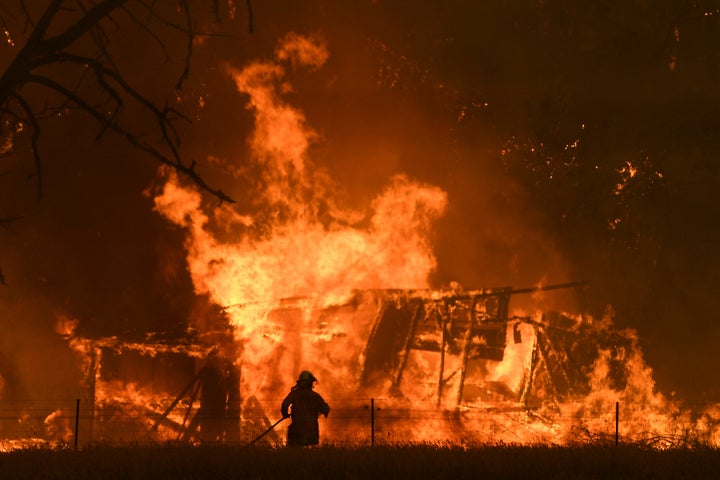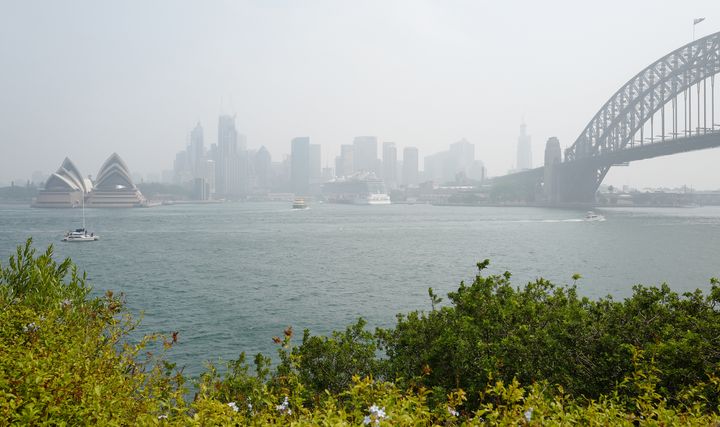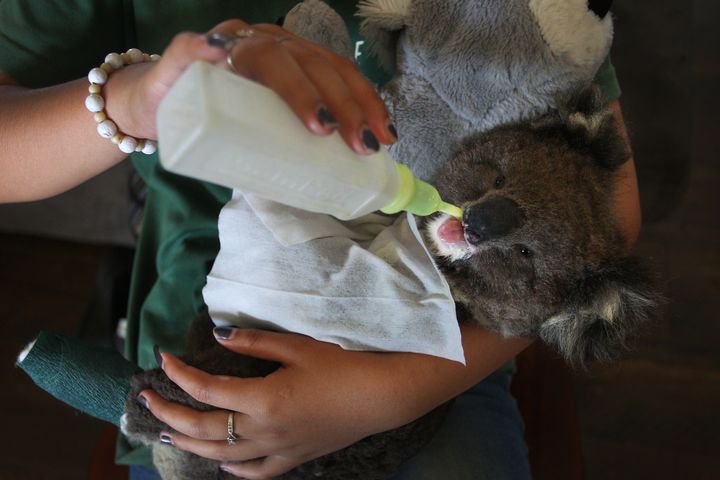
SYDNEY - Authorities issued new fire bans, warnings and evacuation notices in parts of Australia on Thursday, as deadly bushfires continued to burn in the country hit by its hottest and driest year on record.
Twenty-six people have died, thousands are homeless and academics believe over 1 billion animals have been killed or injured in the monster fires that have scorched more than 10.3 million hectares of land - an area the size of South Korea.
Many towns were without power and telecommunications and some were running low on drinking water supplies. Smoke has blanketed major cities including Sydney, Melbourne and Canberra, and drifted across the Pacific affecting cities in South America.


Firefighters have been making the most of a few days of cooler temperatures to prepare for the return of heat and wind later this week, which is expected to fan existing blazes and spark new ones.
The Bureau of Meteorology said on Thursday it saw no sign of cooler weather or significant rainfall in the next few months, adding that 2019 was the country’s hottest and driest on record.
A warning for residents of Victoria’s northeastern region to leave after fires escalated overnight was downgraded to “wait and watch” as authorities monitored conditions. A town on Kangaroo Island, which was ravaged by the fires, was being evacuated over fears bushfires still burning there may escalate.
The majority of the fires that have destroyed most of Australia’s east coast occurred in New South Wales, where 1,870 homes have been destroyed so far, the NSW Rural Fire Service confirmed.
New South Wales on Thursday announced new funds of A$1 billion to rebuild infrastructure and communities in the state affected by the bushfire.
“We don’t want simply to rebuild the communities, we want them to thrive. And this $1 billion investment will do just that,” New South Wales Premier Gladys Berejiklian told reporters in a briefing.
Australia’s bushfire season started earlier than normal following a three-year drought that has left much of the country’s bush land vulnerable to fires.
Prime Minister Scott Morrison on Wednesday urged foreign tourists not to be deterred by deadly bushfires, fearing holiday-makers staying away could hurt the economy, as some normally crowded resorts have already turned into ghost towns.

The following are some highlights of what is happening in the bushfire crisis:
Moody’s Analytics said the cost of the fires could easily surpass that of the deadly 2009 Black Saturday fires that destroyed 450,000 hectares of land, which cost an estimated A$4.4 billion.
Prime Minister Morrison has pledged A$2 billion ($1.37 billion) to a newly created National Bushfire Recovery Agency.
Ecologists at the University of Sydney on Wednesday doubled their estimate of the number of animals killed or injured in the fires to 1 billion.
Emergency services have dismissed claims the fires are caused by environmentalists stopping controlled burn-offs.
The fires have already emitted 400 megatonnes of carbon dioxide into the atmosphere and produced harmful pollutants, the EU’s Copernicus monitoring programme said.
Smoke has drifted across the Pacific, affected cities in South America, and may have reached the Antarctic, the U.N. World Meteorological Organisation said.
Reporting by Paulina Duran, Sonali Paul, Praveen Menon.